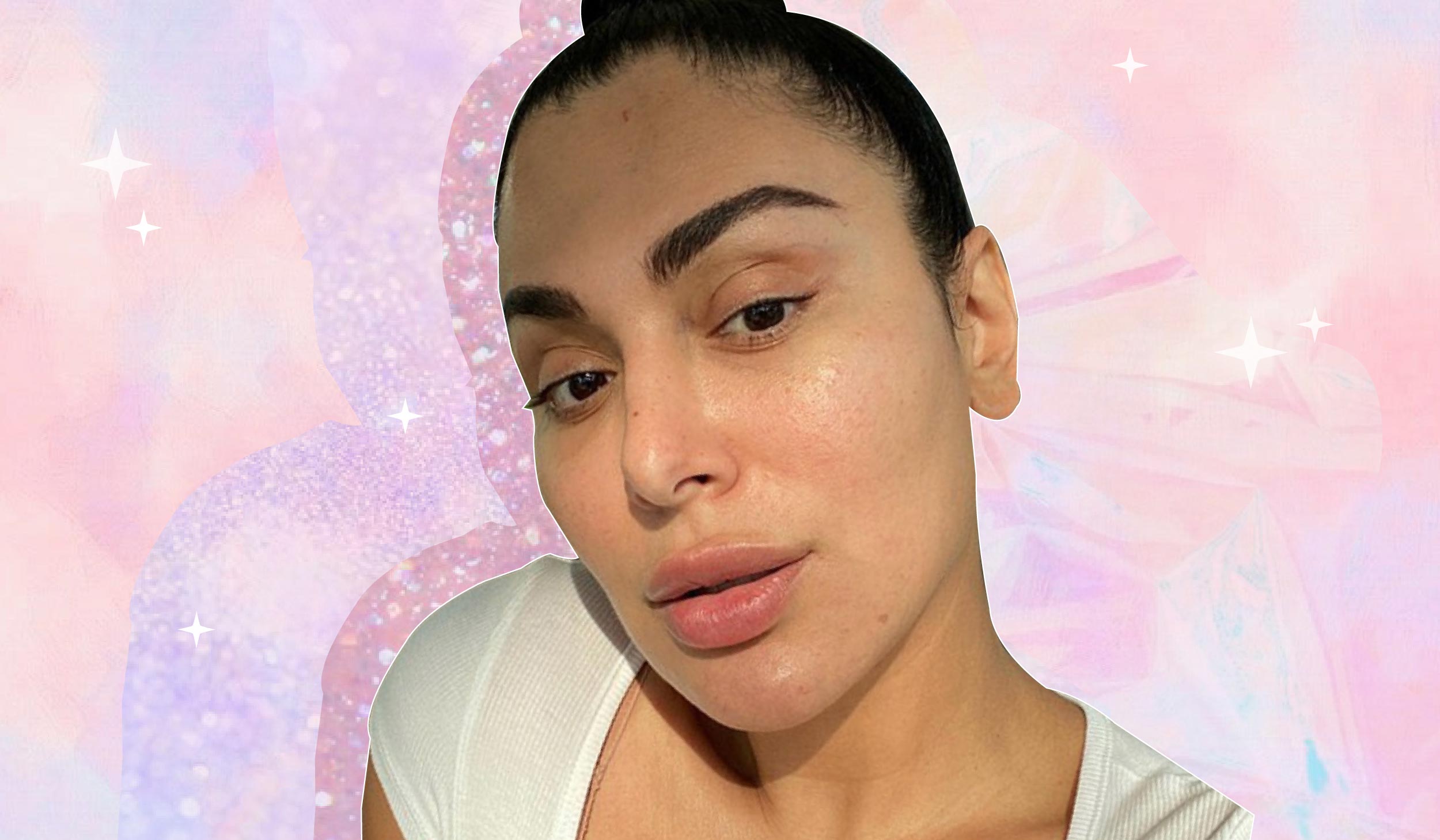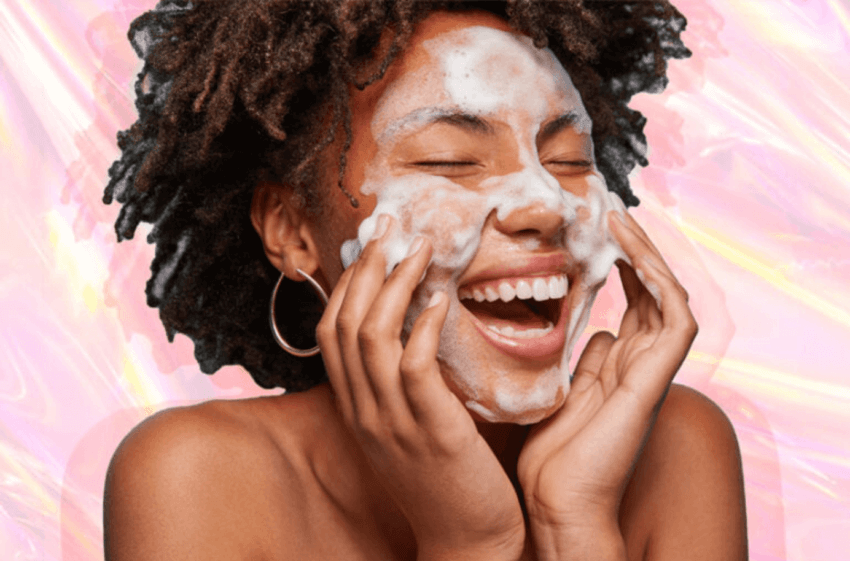Should You Add This Cult-Fave Ingredient To Your Routine? (YES!)

Some of the most iconic, cult-favorite skincare products contain ferulic acid (we’re looking at you, splurgy Skinceuticals C E Ferulic Serum, $166), and there are new ferulic products hitting shelves routinely, too. Case in point: Kiehl’s already buzzed about Ferulic Brew Facial Treatment Essence with Lactic Acid, $52, and The Ordinary’s Resveratrol 3% + Ferulic Acid 3%, $8.
Despite ferulic acid being a hero in so many favored beauty products, the ingredient doesn’t get as much hype compared to say, retinol or vitamin C. We’re here to change that, however slightly! We spoke with two board-certified dermatologists to figure out what ferulic acid is, how it’s different from other acids, and what its primary skincare benefits are.
What is Ferulic Acid?
 Source: SkinCeuticals
Source: SkinCeuticals
There are a few different categories of acid in skincare, the two most common of which are alpha hydroxy acids (AHAs) and beta hydroxy acids (BHAs). Ferulic acid is technically not part of either group but is rather a naturally occurring phenolic compound. (Ascorbic acid – AKA vitamin C – is another one of those acids that belong to neither the AHA nor BHA fam.)
“Ferulic acid is a potent antioxidant and anti-inflammatory that has shown [to have] anti-microbial, anti-cancer, and anti-diabetic properties,” says Dr. Melanie Palm, a board-certified dermatologist and medical director of Art of Skin MD in California. “It’s derived from plant sources – most commonly whole grains, spinach, parsley, grapes, rhubarb, and cereal seeds like wheat, oats, rye, and barley.”
How is Ferulic Acid Different from Other Acids?
While AHAs usually come from fruits or milk acids, ferulic acid is an impressively powerful ingredient that comes from the cell walls of plants. This yields a few unique properties that set it apart from other types of acids.
Naturally Photoprotective: “Ferulic acid, like vitamin E and C, has photoprotective, pigment normalizing, and antioxidant activities,” notes Dr. Palm. In other words, it can help defend your skin against premature signs of aging – such as fine lines, wrinkles, and discoloration – caused by the sun and free radicals.
 Source: The Ordinary
Source: The Ordinary
Stabilizes Other Ingredients: There’s a reason ferulic acid is often paired with notoriously volatile, unstable skincare ingredients (ahem, vitamin C)! “Ferulic acid is an antioxidant that actually works to stabilize other ingredients in a skincare routine so that they work for longer periods of time and more efficiently,” notes Dr. Stacy Chimento, a board-certified dermatologist at Miami’s Riverchase Dermatology.
Increases Efficacy of Other Ingredients: Dr. Palm says ferulic acid increases the skin penetration of vitamin C by 90%, which is dang impressive. She adds, “Unlike some other acids, it also has the ability to stimulate new vessel growth and helps with wound regeneration.”
What are the Benefits of Ferulic Acid?
We briefly touched on some of the benefits of ferulic acid above, but let’s really dive in.
Defends Against Free Radicals: “Being an antioxidant, ferulic acid helps protect the skin by neutralizing free radicals caused by pollution and radiation,” says Dr. Chimento. “This can lessen the appearance of wrinkles, fine lines, and age spots.”
Helps with Hyperpigmentation: Speaking of age spots, one of the most notable benefits of ferulic acid is its ability to help with discoloration caused by the sun (e.g. sun spots and melasma) and post-inflammatory hyperpigmentation caused by acne.
“Vitamin C and ferulic acid interfere with melanogenesis, specifically by blocking an enzyme called tyrosinase,” explains Dr. Palm. “Blocking abnormal melanogenesis is important to reversing abnormal pigmentation in the skin, such as sunspots, freckles, and melasma.”
Lessens Redness: In addition to helping with hyperpigmentation, Dr. Chimento notes that ferulic acid can help lessen redness often experienced by those with sensitive skin.
Posts You'll Love:
Which Skin Types Benefit Most from Using Ferulic Acid?
 Source: Kiehl’s
Source: Kiehl’s
Knowing the benefits of ferulic acid, it’s a bit easier to guess which skin types benefit most from incorporating this ingredient into their regimen. To leave no room for confusion, though, we asked both Dr. Palm and Dr. Chimento what sort of patients they’d recommend this ingredient to.
Anyone Concerned About Aging Skin: “Aging skin is likely to see the most benefits from utilizing ferulic acid in their skincare regimen,” says Dr. Chimento. “The ingredient may be able to reverse some signs of premature aging [caused by] free radicals.”
Those Dealing with Hyperpigmentation: Dr. Palm says, “Photodamaged skin and those with abnormal pigmentation may benefit [greatly] from the usage of a ferulic acid-containing skincare product.”
Acne-Prone Skin Types: Those dealing with redness and post-inflammatory hyperpigmentation from acne can benefit from incorporating ferulic acid into their regimen. “It lessens scarring and can keep inflammation at bay,” notes Dr. Chimento.
Even if you don’t have one of the above concerns, anyone can benefit from using ferulic acid. “It acts as an antioxidant and anti-inflammatory to neutralize environmental assaults on the skin,” says Dr. Palm. (And really, who wouldn’t want that?!).
For more bomb skincare ingredients, check out the five ingredients derms couldn’t live without.
Disclaimer: Every product we review has been independently selected and tested without bias by our editorial team. We never take payment to review products, however, some brands allow affiliate links, so we may earn a commission if you purchase a product by clicking on one of our links.























Leave a comment